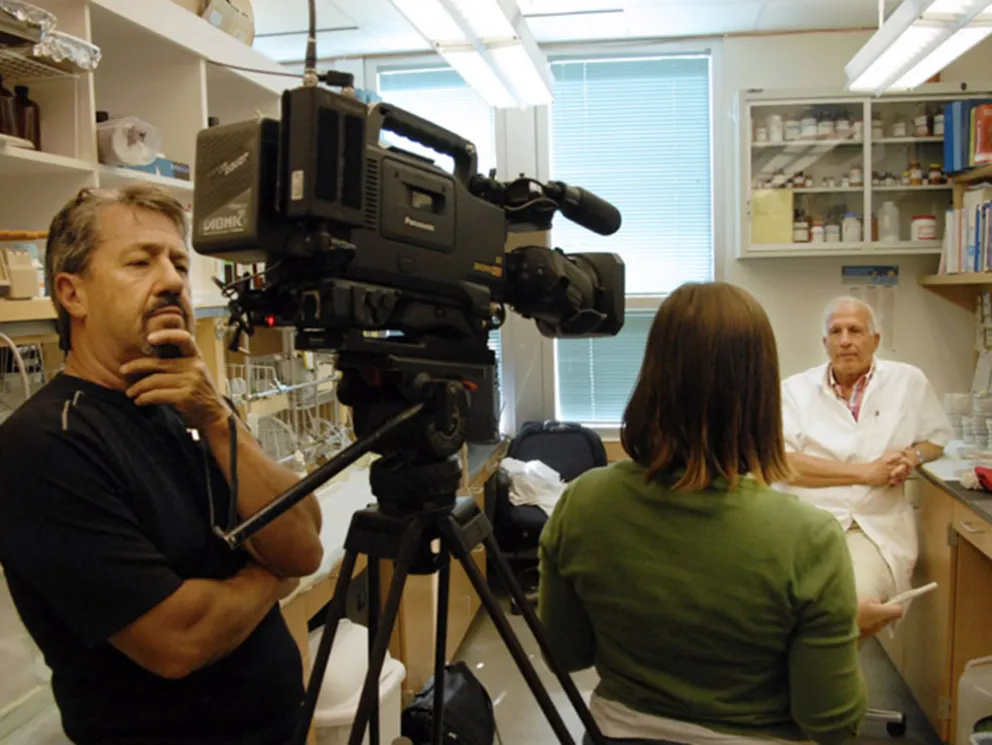
Photo by Kelly Gorham/Montana State University
- Most photographers with a news background are accustomed to gathering enough information to satisfy the 5 ‘W’s (who, what, when, where, why) for photo captions. However, we’re entering a new age of multimedia. Photo slide shows now usually include an audio soundtrack containing interviews. The interview is a key element to make sure the core message is communicated. Rambling, unfocused questions often result in rambling, unfocused responses. Since the interview is spoken and not written, it’s much more difficult to edit into something that will keep the viewer’s attention. Pretty pictures are great but if the audio narrative is off-target, the pictures won’t really matter.
Prepare in advance. Research your subject. Have they appeared in interviews before? Read up on them. Think about the core message and think of specific questions to help your subject communicate this message. It’s okay to email the questions to the subject in advance so they have time to think. Give the subject a rough outline of what you think the story will be about, when and where it will appear.
Develop a story arch. Think in terms of a beginning, middle and end. Take the reader on a journey. Don’t masquerade statements as questions. You’re there to listen, not to show off how much you know about the subject. Simple, open ended questions lead to better information. Why did you do that? What happened? How did it start? What happened next? What did it feel like? What were you thinking?
In addition to any specific questions regarding the topic there are three questions that work well in any situation. The questions can even be used exclusively and will elicit rich and thoughtful responses.
- What are you doing or what’s going on? It seems simple but it’s a great way to get the interview going.
- Are there any challenges you’ve overcome?
- What was your solution? This question can create the story arch. People like to hear about problems and solutions. It offers a feeling of resolution.
- What surprised you and why? This question often brings the most emotional response to the interview. Subjects love this question because it offers them an opportunity to talk about their passion for the topic. This question often provides a great ending to the story.
- Listen for specific things: details and motives. Details allow the reader to “see” the story. Motives allow the viewer in the subject’s head. Motives for making a choice are much more interesting than the choice.
-
The referenced media source is missing and needs to be re-embedded.Photo by Kelly Gorham/Montana State University
One on one interviews are best. Conduct your own interview. Don’t try to just record an interview with a print reporter as the print style of interviewing tends to be more conversational. A good audio/video interview will result in concise responses.
Communicate for the masses: Studies have shown that most people’s understanding of just about anything is on an 8th grade level, especially for science. When setting up for the interview, ask the subject to respond to questions as though they’re speaking to an 8th grade class. Avoid big words and, if during the interview, the subject says something unclear, stop them and have them rephrase. Ask the subject if they have any questions before you begin. Start with simple questions like their name, where they’re from, etc.
Practice listening at all times. Don’t talk over the top of the subject. Audio can be ruined by hearing the reporter in the background if they respond to the responses. Ask the question then be quiet. Give a long pause after their responses. This not only gives you time to make an edit but also invites the subject to talk more. It’s human nature to fill silence. Sometimes if there’s a pause, the subject will make really compelling comments. Direct the subject to repeat the question in their answer. This will create a good lead for audio sound bites.
Make sure you understand what the subject is saying. If at any time in the interview you’re unclear, stop and say, “I think you mean xyz. Have I got that right?” At the end of the interview ask the subject if there’s anything you should have asked or if they have anything to add.
Always conclude the interview by thanking your subject. Once you’ve finished your media project, share it with them. If you really want to improve then ask them for their opinion. You can learn a lot about your skills as an interviewer by the subject’s opinion of the project.
Kelly Gorham has been a University Photographer at Montanta State University since 2007. You can see more of his work on his website at www.gorhamphotography.com or on his Youtube channel at http://www.youtube.com/kellygorham.